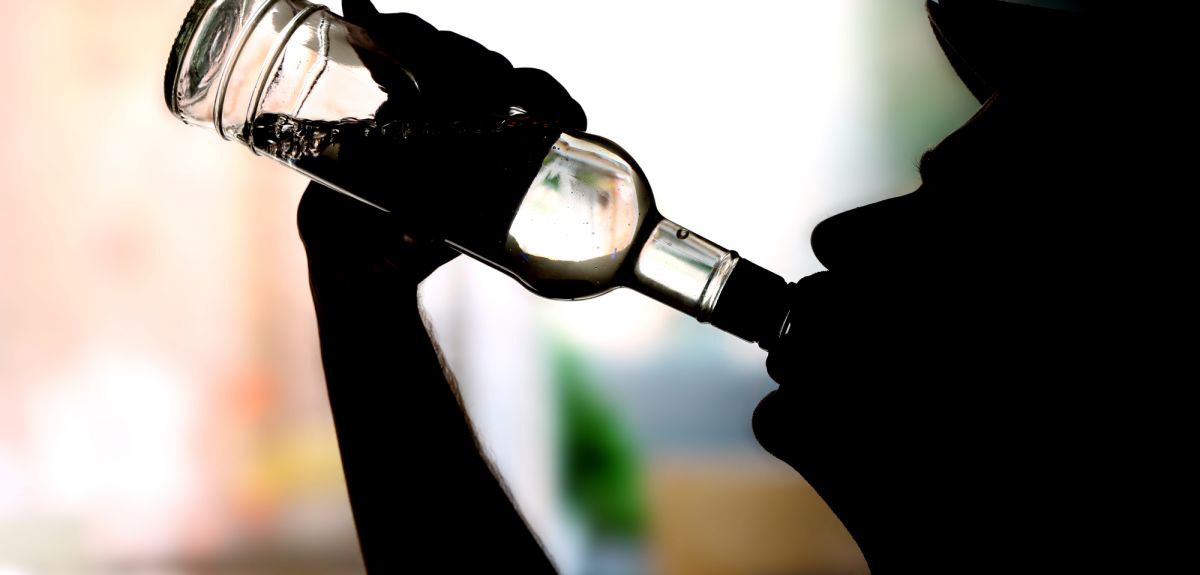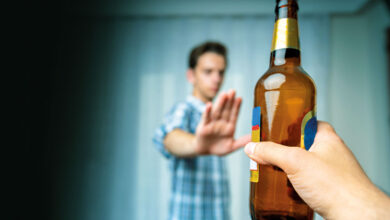7 Subtle Signs You’re Developing an Alcohol Dependency

Introduction: The Silent Slide into Dependency
Alcohol dependency often begins subtly, masked by social acceptance or stress relief. Recognizing early red flags can prevent escalation. Studies show 1 in 8 adults develop alcohol use disorder (AUD), yet many overlook initial warning signs . Alcohol’s normalization in cultures from workplace happy hours to family gatherings makes dependency easy to dismiss. However, the stakes are high: half of all AUD patients experience severe withdrawal symptoms , and chronic use damages organs like the liver, heart, and brain. This article delves into seven subtle indicators of dependency, backed by neuroscience and clinical research, and provides evidence-based strategies to intervene.
The 7 Subtle Signs of Alcohol Dependency
1. You Can’t “Leave It”
Finishing every drink, even when you intended to stop, signals loss of control. Behavioral studies show that “one drink” often becomes “one more,” with empty bottles as physical evidence.
The Neuroscience of Compulsion
Alcohol hijacks the brain’s reward system by flooding the nucleus accumbens with dopamine, reinforcing compulsive behavior. Over time, this overrides rational decision-making, making it harder to adhere to limits. Neuroimaging reveals that AUD patients exhibit reduced prefrontal cortex activity, impairing self-regulation .
Social Pressure Amplification
Environments where drinking is normalized such as corporate events or peer gatherings exacerbate this pattern. A 2024 study found 68% of workplace drinkers exceed recommended limits due to social expectations. Even casual phrases like “Let’s grab a drink” subtly pressure individuals to comply.
2. Tolerance Builds Quietly
Needing increasing amounts to feel alcohol’s effects indicates neuroadaptation. The brain’s receptors dull over time, requiring 20–30% more alcohol to achieve the same buzz.
The Science of Tolerance
Chronic alcohol exposure disrupts GABA (calming neurotransmitter) and glutamate (excitatory neurotransmitter) systems. This imbalance forces the brain to rely on alcohol to maintain equilibrium, creating a vicious cycle. For example, longtime drinkers often report needing alcohol to “feel normal” in the morning .
Hidden Health Costs
Rising tolerance correlates with early-stage liver damage, detectable via elevated liver enzymes (ALT/AST). Long-term, this progresses to fatty liver disease, cirrhosis, or pancreatitis . Cardiovascular risks also escalate, including irregular heartbeats and hypertension.
3. Cravings Disguised as “Social Lubrication”
Using alcohol to ease social anxiety or loneliness masks dependency. Individuals may claim they “need a drink to unwind” at gatherings, conflating coping with enjoyment.
Emotional vs. Situational Cravings
Emotional cravings (triggered by stress or sadness) activate the amygdala , linking alcohol to mood regulation. Situational cravings (e.g., walking past a bar) involve the hippocampus, which associates environments with past drinking . Both pathways deepen dependency.
The Role of Trauma
Adverse childhood experiences (ACEs) increase vulnerability to self-medicating. A 2023 study found 45% of AUD patients reported childhood trauma , using alcohol to numb unresolved pain . Marketing tactics exploit this by glamorizing alcohol as a “cure” for stress.
4. Emotional Rollercoaster
Mood swings euphoria while drinking, irritability when sober reflect alcohol’s impact on neurotransmitters. These fluctuations trap users in a cycle of self-medication.
Serotonin and Dopamine Dysregulation
Alcohol initially boosts serotonin (mood) and dopamine (reward), but chronic use depletes these chemicals, worsening depression and anxiety. A 2024 study linked AUD to 3x higher insomnia rates , as alcohol disrupts REM sleep cycles . H3: Long-Term Mental Health Risks
Prolonged misuse increases suicide risk, with AUD patients 5x more likely to attempt suicide than non-users . Cognitive decline, including memory loss and reduced problem-solving skills, also emerges over time.
5. Secrecy and Justification
Hiding drinking habits or rationalizing consumption (“I deserve this after a long day”) signals guilt and denial. Loved ones may notice inconsistencies between stated limits and actual intake.
Cognitive Dissonance
Justifications like “I don’t drink daily” or “I only drink wine” contradict escalating consumption. This dissonance delays help-seeking, as users cling to perceived control. Secretive behaviors such as hiding bottles or lying about intake often follow .
Digital Tracking Tools
Apps like Drinkaware or Sober Grid help users log intake and identify patterns. Studies show these tools reduce consumption by 27% among regular users . They also provide anonymous support communities to combat isolation.
6. Neglecting Interests
Former hobbies lose appeal as drinking becomes the focal point. Social plans revolve around alcohol, and non-drinking activities feel “boring” or unrewarding.
Dopamine Drain on Non-Alcohol Activities
Alcohol hijacks the brain’s reward system, making sober activities seem less pleasurable. Neuroplasticity research shows this rewiring can reverse within 6–12 months of abstinence, restoring interest in hobbies.
Social Isolation
Avoiding alcohol-free gatherings increases loneliness, which fuels cravings. This cycle is linked to 50% higher relapse rates , as isolation reduces accountability . Rebuilding non-drinking social networks is critical for recovery.
7. Withdrawal in Disguise
Subtle physical signs trouble sleeping, mild anxiety, or restlessness when not drinking indicate early withdrawal. These symptoms are often dismissed as stress.
The Physiology of Withdrawal
Alcohol withdrawal begins 6–12 hours after the last drink, with symptoms escalating from tremors to seizures in severe cases. Early signs include sweating, nausea, and irritability. The kindling effect where repeated withdrawals increase severity explains why medical supervision is critical .
Medical Risks
Untreated withdrawal can lead to delirium tremens (DTs), with a 5–15% mortality rate . Symptoms like hallucinations and rapid heart rate require immediate intervention.
Breaking the Cycle: Strategies for Early Intervention
Track and Reflect
Use a Drinking Journal
Document each drink, context, and mood. Patterns emerge within 2–3 weeks , revealing triggers like stress or social settings. Pair this with wearable devices tracking sleep and heart rate to correlate alcohol’s physical impacts .
Set Boundaries
Experiment with “dry days” or alcohol-free social events. Replace cocktails with mocktails to test control without deprivation.
Seek Support
Professional Therapy
Cognitive Behavioral Therapy (CBT) addresses distorted thinking around alcohol. Studies show 60% of early-stage AUD patients reduce intake after 12 CBT sessions. Medications like naltrexone block opioid receptors, reducing cravings .
Peer Networks
Groups like Moderation Management or Alcoholics Anonymous provide non-judgmental support. Online forums offer anonymity for those hesitant to seek in-person help.
The Role of Societal Pressures
Normalization in Culture
Alcohol is embedded in celebrations, workplaces, and media, making dependency easy to overlook. Ads and social media often glamorize drinking, downplaying risks.
Marketing Tactics
Alcohol brands spend $2 billion annually on ads targeting young adults, linking drinking to success and romance. Social media influencers further normalize binge drinking, with platforms like TikTok featuring “drunk” challenges .
Workplace Culture
Companies with “work hard, play hard” mentalities see 2x higher AUD rates among employees . Policies promoting alcohol-free team-building activities can mitigate this risk.
When to Seek Help
If three or more signs resonate, consult a healthcare provider. Evidence-based treatments include:
Medical Detox
Supervised detox manages withdrawal symptoms, reducing risks of seizures or DTs. Benzodiazepines are often prescribed to stabilize the nervous system .
Long-Term Care
Inpatient rehab programs provide structured environments, while outpatient therapy offers flexibility. Naltrexone or acamprosate are FDA-approved for relapse prevention.
Conclusion: Awareness as a Lifeline
Alcohol dependency thrives in silence. By heeding these subtle red flags and seeking help early, individuals can reclaim balance and prevent long-term harm.

